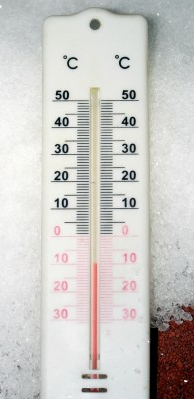
15 Dec Preparing for Winter’s Worst Can Save Homeowners Money, Time & Aggravation
 Snow, ice and frigid temperatures are commonplace in the Northeast, and without proper preparation, can cause a great deal of aggravation and expensive problems in your home. The good news is that most of these potential problems caused by nasty winter weather can be avoided with just a few relatively simple steps.
Snow, ice and frigid temperatures are commonplace in the Northeast, and without proper preparation, can cause a great deal of aggravation and expensive problems in your home. The good news is that most of these potential problems caused by nasty winter weather can be avoided with just a few relatively simple steps.
Three of the most common problems facing homeowners in this area are ice dams, frozen pipes and loss of heat due to inadequate insulation. Each of these issues can be addressed ahead of time to save you both money and headaches.
Ice Dams — Ice dams are formed when the air in your attic is warm enough to melt the snow and ice on the roof. The water runs down the roof and refreezes near the gutters and at the edges of the roof. Water builds up behind the dam that is formed by this refreezing, and eventually finds its way into your home. For more information on ice dams and how to avoid them, read our article, How to Avoid the Dreaded Ice Dam.
Frozen Pipes — Damage caused by frozen pipes is a leading cause of insurance claims in America. Repair and restoration typically costs thousands of dollars, but preventative measures can be taken with very little cost.
It is best to avoid exposing water pipes to subfreezing temperatures, by placing them only in areas of the home that are heated. Pipes should not be placed in attics, crawl spases and close to outside walls. A good builder knows this, and addresses this issue as the home is built.
In existing homes, pipes may have to be re-routed or fitted with insulation to slow the transfer of heat. It is important not to leave any gaps in insulation that may expose the pipe to cold air. Insulation sleeves or wrapping can be obtained at most hardware stores or home centers, or you can consult your general contractor for more information.
Any cracks or holes in the outside walls of your home should be sealed with caulking to prevent cold air from entering. Check for holes and extra space where cable wires and outdoor faucet pipes enter your home.
Kitchen and bathroom cabinets can prevent warm inside air from reaching pipes under sinks and in adjacent outside walls. Keeping a cabinet door open during particularly cold weather will allow warm air to circulate and may prevent frozen pipes. You can also address this issue with electric heating tapes or cables, but should only be installed by a qualified professional.
Placing an insulating dome or other covering on outdoor faucets and spigots will also lessen the chance that water in your home’s pipes will freeze.
Letting a faucet drip slowly during extremely cold weather can prevent a pipe from bursting. The slow drip prevents excessive pressure from building up between a blockage and the faucet. Dripping faucets waste some water, so this should be limited to pipes that are vulnerable to freezing. If you suspect that a pipe has frozen, call a plumber and turn off the water at the water main until repairs are completed to avoid more serious problems.
If you are going on a trip, you may be inclined to turn down the heat to save energy costs, but be careful not to lower it so much as to cause frozen pipes. If you have concerns, you may opt to shut off the water and drain the pipes before leaving.
Inadequate Insulation — With energy costs at near record levels, no one wants to have their heat escaping through leaks in the walls and roof of their home. Attics, basements and crawl spaces are all places where heat typically escapes from a home, as well as around doors and windows.
Air leaks can be eliminated with caulk, spray foam or weather stripping. Insulation can be added in the attic and crawl spaces to generate big cost savings in many cases. The US Environmental Protection Agency recommends at least 12 to 15 inches of insulation on the floor of attics.
If your home has old or inefficient windows or doors, consider upgrading to newer, more efficient models. The money you save in energy costs will soon pay for the upgrades.
Grasso Development takes pride in the knowledge and experience it has acquired in the area of building and maintaining fine homes for three generations and more than fifty years. If you have questions about custom home building, renovations or home maintenance in the Westchester, NY area, call Grasso Development at (914) 632-0525. Grasso Development can help you address most home maintenance issues, as well as repairs, rennovations and new construction.